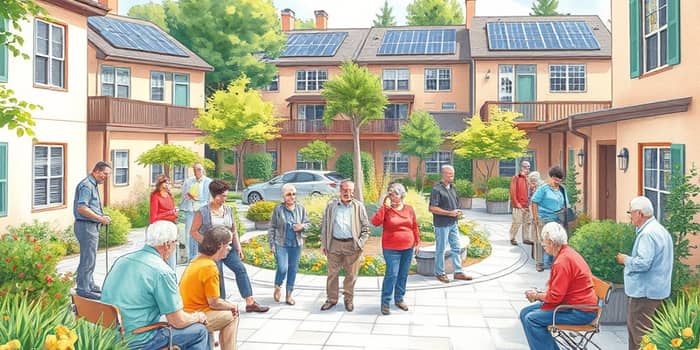
Retirement is a time of transformation, a chapter filled with both anticipation and questions. Choosing the right place to call home can shape your comfort, health, and sense of belonging for years to come. This guide illuminates the landscape of senior living so you can make an empowered decision.
Every senior’s journey is unique, which means housing options must match individual needs and dreams. From fully independent villas to on-site nursing care, there is no one-size-fits-all solution. By exploring each category, you can identify the environment that best nurtures your physical well-being and personal growth.
When you step into a community, observe the atmosphere and speak with residents. Their stories will reveal more than brochures ever could.
Financial planning is paramount when selecting a retirement setting. Costs vary widely by location, level of care, and amenities. Understanding local averages helps set realistic expectations and identify communities that align with your budget.
While high-end markets may offer resort-style living, affordable alternatives exist in smaller cities and rural areas. Investigate entry fees, refundable deposits, and monthly rents to compare total costs over time.
The senior housing industry is evolving rapidly, driven by changing preferences and demographic shifts. Staying informed on these trends can help you choose a community built for tomorrow’s standards.
First, there is a growing demand for sustainable design. Solar panels, energy-efficient appliances, and native landscaping reduce environmental impact and long-term utility expenses. Many communities now integrate rainwater harvesting and green roofs.
Affordability remains a critical theme. Developers are experimenting with modular construction and shared living models to lower entry costs. Co-housing arrangements, where seniors share a common kitchen and living area, foster companionship while sharing expenses.
Navigating costs can feel overwhelming, but a variety of programs exist to lighten the load. Research federal, state, and local assistance options early in your planning process.
Consult a certified financial planner to integrate these programs into a holistic budget. This ensures financial peace of mind throughout your retirement.
Beyond bricks, mortar, and price tags, your new home must resonate with your lifestyle and values. Reflect on the following factors as you tour communities and weigh options.
Speak openly with family members and advisors. Their insights can reveal blind spots and reinforce your priorities.
Choosing retirement housing is more than a transaction—it is a declaration about how you intend to live your later years. By aligning your financial plan, care preferences, and personal aspirations, you can step into this phase with assurance and excitement.
Imagine mornings spent in a lush garden, afternoons participating in lifelong learning, and evenings sharing stories with friends who understand your journey. Whether in a bustling urban center or a tranquil rural enclave, the right community will nurture your body, mind, and spirit.
As you weigh options—from continuing care communities to cozy accessory dwelling units—remember that the best choice is one that supports your vision for a fulfilling life. Armed with knowledge, practical tools, and a clear sense of purpose, you can transform retirement into your most vibrant chapter yet.
References













